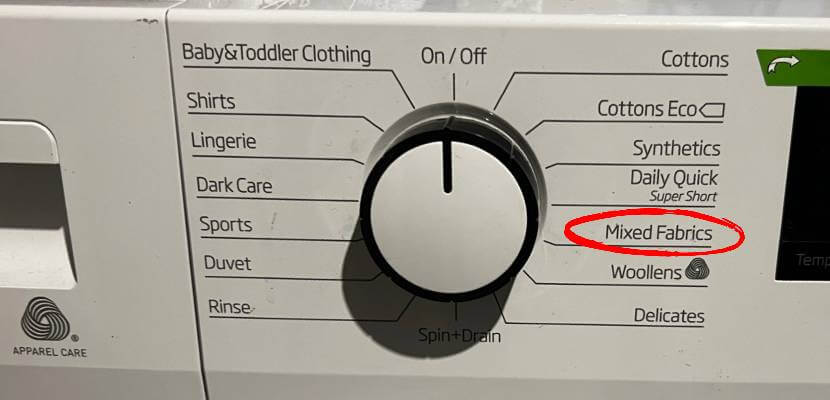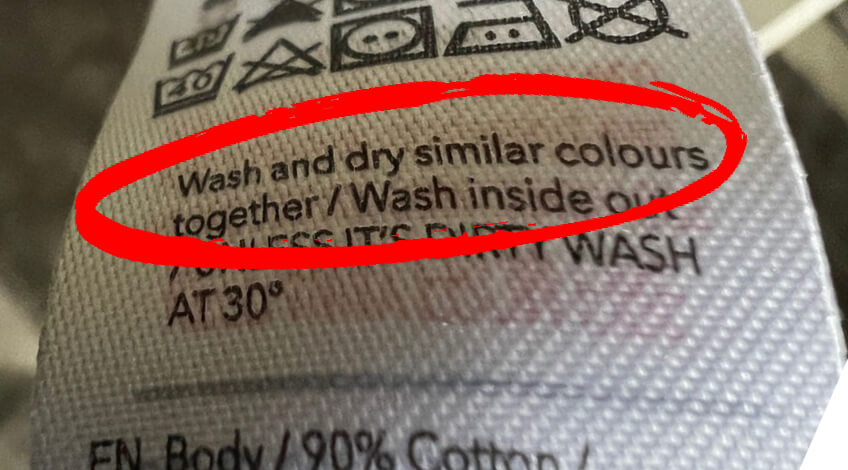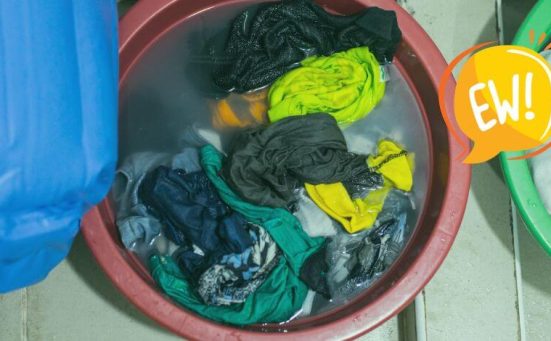
What Is The “Mixed Load” Setting On A Washing Machine?
When you take a look at your washer, you may be confused about how many programmes there are to choose from. Chances are, you’re just using the same old settings without even exploring what the others can do, such as the “Mixed Load” setting.
If you’re not using it yet, the Mixed Load setting is such a useful programme that allows you to wash different kinds of clothes together, without the risk of damage. Let’s have a closer look into the benefits, the things you should remember, and other tips to follow when using this setting in this article.
Why You Should Start Using The “Mixed Load” Setting
If you are a busy person who dreads having to do several loads of laundry, the Mixed Load setting is especially for you. Ever tried washing cotton shirts and denim trousers together, and nothing’s shrinking or crumpled and wonky after the cycle? Believe it or not, the Mixed Load setting will make this possible.
Normally, you often do different loads for your cotton shirts, polyester trousers, and denim skirts. But what if we tell you that as long as you do not overload your washer’s capacity, you can wash these different fabrics at the same time using the Mixed Load setting, which is such a convenient way to do laundry!
Typically, this setting makes use of cold to warm water (around 30 – 40°C), approximately lasts around 45 to 80 minutes, and uses a maximum spin cycle. Hence, it’s best used for a variety of fabrics that are durable, such as cotton, denim, polyester, and linen.
The temperature used in this setting is often enough to clean fabrics thoroughly and kill bacteria, which will also make it effective for removing stains and foul odours.
Don’t see the Mixed Load setting on your washer? Manufacturers may have a different way of calling this setting in their washing machine models. Some may just call it Mixed or Mix/Synthetic. Check your washer’s user manual for more information.

The popular brand, LG, for example, calls this setting, “Mixed Fabric”.
WARNING: Although the setting is designed to wash different types of fabrics together, it’s important to remember that this will not include your delicate fabrics, especially those that are made of silk and wool.
As said earlier, the Mixed Load setting often makes use of the maximum spin cycle, which can be too much for your delicate garments. Hence, if you have to wash sensitive fabrics or clothes with embellishments, the Delicate setting will be your best option.
The Benefits Of Using The “Mixed Load” Setting
If you need more convincing to finally click that Mixed Load button when doing your laundry, here are the advantages you’re missing out on:
It Saves Time
One of the best advantages of using the mixed load setting is that it saves you so much time. Usually, you’ll have to do a different load for your denim, your cotton, and your polyester fabrics. However, this doesn’t have to be the case if you use the Mixed Load setting.
Using this programme will reduce the need for multiple washes, saving you so much time!
SEE ALSO: How Long Do Washing Machines Take To Wash Clothes? (for every fabric type)
It Reduces Your Bills
Using the Mixed Load setting will allow you to save a significant amount on your water and energy bills! Just remember, you’re reducing the amount of times you’re doing laundry, which means you’re using less water and electricity per cycle!

This is especially the case if you have a modern washing machine with an energy-saving feature!
It’s Gentle On Your Fabrics
The Mixed Load is gentle enough for your durable clothing, and will not cause further wear and tear. The programme is specifically designed with adjusted water temperature, spin speed, and duration that’s enough to clean fabrics without damaging them.
As a result, you’re doing laundry quicker and you’re extending your clothes’ lifespan at the same time.
Tips For Washing Your Mixed Garments
Of course, this article wouldn’t be complete if we did not give you our best tips for washing your mixed laundry! Here are the things you need to remember:
Always Check The Care Labels
Before you make use of the extremely convenient “Mixed Load” setting, it’s always crucial to check the care labels of your garments. As we said above, while many items can safely be washed together under this setting, there are exceptions.
Items that require hand washing or are particularly delicate may not work well for mixed loads. Doing this simple step of reading the labels can help you prevent damage to your clothes with sensitive materials or embellishments.
Sort By Colour
Although the “Mixed Load” setting is designed to handle different colours together, the risk of colour bleeding still exists, especially with new garments or those with very vibrant colours.

To prevent this, it’s always recommended to check if items are colour-fast, especially if your clothes are new. Doing this will help you maintain the colours of your clothes, making sure that your whites are bright and your colours are vibrant.
Use Liquid Detergent
For mixed loads, liquid detergent is often the best choice. It dissolves quickly and more completely in water, ensuring an even and thorough distribution throughout the wash.
- Persil Non Bio Laundry Washing Liquid Detergent: our bestselling formula which is gentle next to sensitive skin
- With this liquid detergent, you can get tough on stains like mud, yoghurt and jam, even in a quick and cold wash
The laundry detergent you use is particularly important when washing a variety of fabrics, as it prevents the uneven application of detergent that can occur with powders, which sometimes leave residues on clothes.
TIP: Want your clothes to smell fresh? Use half a cup of white vinegar as a fabric conditioner alternative!
Never Overload Your Washer
With the Mixed Load setting and all other programmes, it’s always best to not overload the washing machine. Overloading your washer to the point that it’s exceeding its recommended capacity will not save you time and just restrict the movement of your clothes.

The result? Reduced effectiveness in washing and rinsing, which leads to smelly clothes. Make sure to fill at least half but not over ¾ of your washer’s capacity to allow water and detergent to circulate evenly.
SEE ALSO: How To Tell If Your Tumble Dryer Is Overloaded
Simplify Your Laundry Sessions
Using the Mixed Load setting makes your laundry sessions simpler and faster, while still keeping your clothes clean and in their best condition!
By following the tips above, you’ll be able to make the most of this programme and make your laundry days feel like less of a chore.
Do you have questions? Or have other tips to share? Feel free to leave a comment below!
Frequently Asked Questions
To find out if your washing machine has a “Mixed Load” setting, you can check your washer’s user manual or look for settings labelled as “Mixed,” “Mix/Synthetic,” or something similar on your machine. Manufacturers may use different names for this setting, so consulting the manual or machine’s control panel is key.
Including heavily soiled items in a mixed load is generally not recommended. The “Mixed Load” setting is designed for a combination of fabrics with a normal soil level, and heavily soiled items may require a more intensive cleaning cycle and pre-treatment to properly remove dirt and stains.
While it’s technically possible, towels often require a different wash cycle and water temperature due to their thickness and absorbency. For optimal results, it’s advisable to wash towels separately from regular clothes.
A mixed load wash typically uses a lower temperature around 30-40°C cold to warm water. The moderate temperature is gentle enough for most fabrics while still getting them clean.
Also, follow us on Pinterest ...




